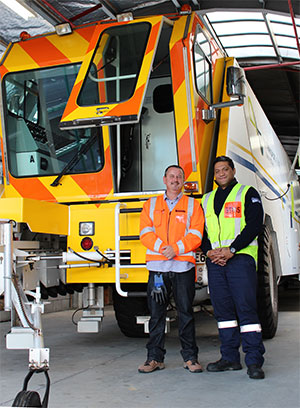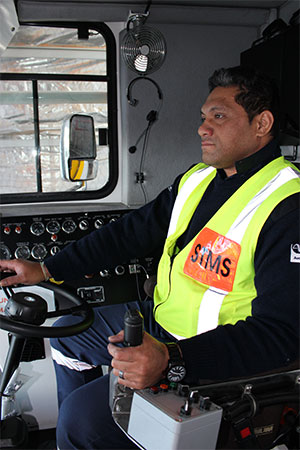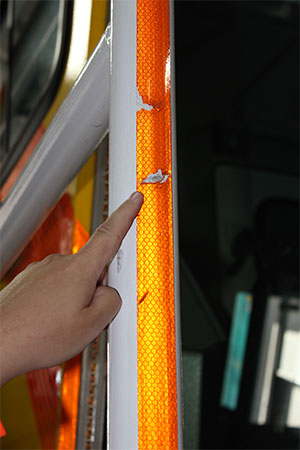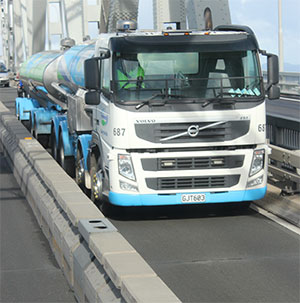At 16 barrier blocks at a time, the Auckland Harbour Bridge changes its configuration every weekday to cater for the traffic peaks
Every weekday two huge beasts with feelers, cabs at each end, two engines and lots of switches move crabwise up and down the Auckland Harbour Bridge, picking up 750kg blocks of concrete 16 at a time, passing them through their bodies, and then spinning them out the back end like enormous termites on wheels.
These are the BTM or barrier transfer machines, highly specialised moving weightlifters that make a major contribution to the efficient flow of 200 thousand vehicles a day over Auckland’s Waitemata Harbour.
The machines move the barriers that run between the opposing bridge lanes back and forth each day, changing the number of lanes available to vehicles on a ‘tidal flow’ basis. Providing more lanes to cope with morning and evening peak flows greatly improves travel times over the bridge, and provides measureable benefits to motorists and freight movements in terms of time and fuel saved, convenience and safety.
Early each weekday morning, a total of five lanes is made available for traffic coming into the city over the bridge, leaving three for northbound traffic. At 10am, the first machine sets out across one lane, thus evening up the total number of lanes each way to allow for mid-day flows.
Then at 3 pm, the second machine also moves from north to south to move the barrier over one more lane – creating five northbound and three southbound, ready for the outgoing, northbound evening peak.
Again at 8 pm the same evening, the machines set off to the north over the bridge, moving the barrier two lanes to the middle, and again at 4 am preparing the lane configuration for the next day’s morning peak – five lanes city bound, three northbound.
The 19 metre long machines were designed and built in California at a cost of $1.4 million each and started their duties in Auckland in 2009.
They pick up the linked blocks with rubberised wheels that hook into flanges on top of the blocks, then straddle and pull them through guide rails beneath the machine, setting them down gently on the road surface behind the machine.
Sophisticated guiding systems automatically follow a metallic loop set into the bridge carriageway, while the machine crawls over the bridge at an average speed of around 5.5kph. The BTM is under the control of highly trained operators like Martin Olive, who checks the machine’s alignment by keeping his eye on a jockey wheel on a slender arm in front of the machine, and with a gentle touch of a conventional steering wheel ensures it doesn’t stray from the thin blue dotted line on the asphalt.
Martin has been operating the machine and its predecessors for around six years now. He’s become used to the large trucks that use the lane alongside the working machine and occasionally hit the protective bar in front of his cab with their wing mirrors. Dents and scratches on the bar are testimony to the worrying trend for some trucks to use the lane despite warning signs and an ‘X Trucks’ on the lane signal boards.
But this is all in a day’s work for the crews who man the machines – one operator at each end – and the rubbish collector who moves along the empty lane in front of the machine, and then returns the operators to the northern depot for a lunch break and a resumption of the barrier moving routine.

Jason Morgan, AHB / CMJ Department Manager for Auckland Motorways, with machine operator Martin Olive

Martin Olive at the controls.

Dents in the machine’s protective bars are evidence of close encounters with truck mirrors

Narrow escape – trucks are directed off the lane alongside the working barrier machine, but……